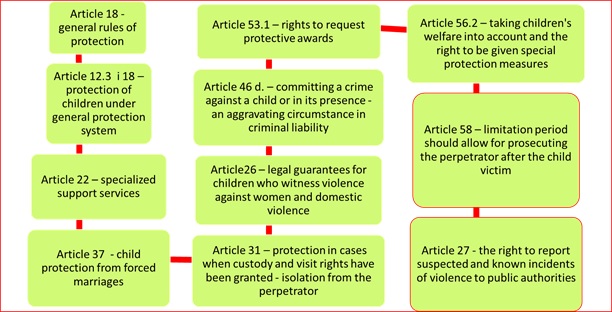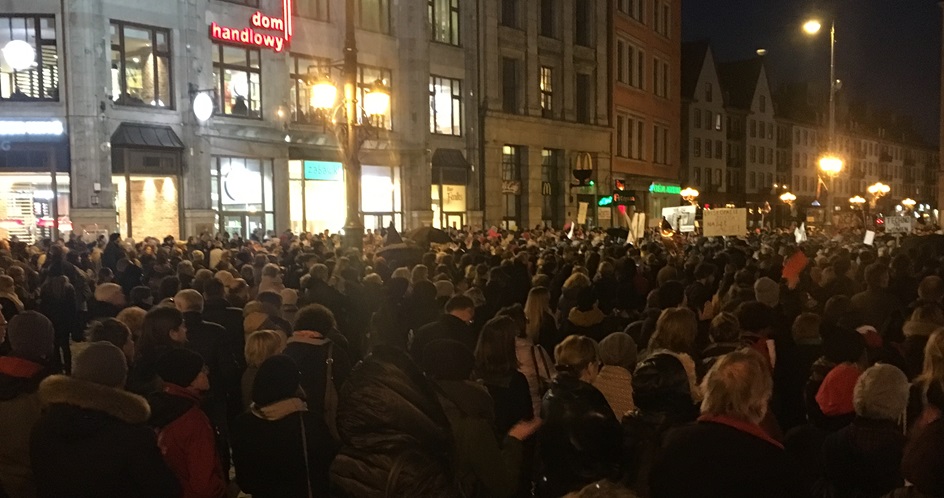The ongoing dialogue between Christianity and socialism, albeit soft and sometimes rather marginal is still going on and bears a genuine significance in the face of the newer problems of our changing world – the refugees ripples, the climate issues and the Corona virus crisis that menaces even more within a context of “globalization of profit and indifference” triggered by a multi-factor equation of recent developments and challenges. Two very different ethical and meaningful visions of the world and of the value of people come together again to address an imperative concern described by the negative consequences of globalization and environmental crisis. The book is an image of the works of the Christian-Marxist symposia summer school. It is a call for dialogue – for transversal dialogue – involving all concerned with the better future of the planet all men and women of good will and, especially, all who take the current environmental crisis seriously. Transversality avoid hierarchies of actors and themes in the actions engaged by this dialogue for recovery and development. Nowadays the labour movement seeks the fulfilment of goals within the capitalist society rather than against it. The seizure of power by revolutionary means is neither an acceptable or a fruitful path to follow. Christianity and socialism maintain newer revised antagonism, but address their specific aims via respectful cooperation and devotion to the rejection of oppression and exploitation.
The four chapters of the volume structure this multi-faced, complex approach reuniting mainly young people’s contributions from Austria, Belgium, France, Vatican, Hungary, Italy, Portugal, Tunisia and Greece meant to form a basis for university curriculum in Portugal (Coimbra), Spain (UNED), Austria (Innsbruck) and Italy (Sophia/Florence). The first chapter, “Backgrounds and Starting Points” gathers three topics: Towards a ‘Differentiated Consensus’ (Franz Kronreif); Socialism and Community (Walter Baier) and Europe’s Common Destiny (Angelo Vincenzo Zani). The concept of “differentiated consensus” is based on transversal social ethics and the complementarity of truth and reality. Humanity, society and world are equivalent interlocutors in this dialogical attempt to describe what is man and which are the undeniably common valuable aims and themes apt to sustain consensus and, eventually common hope and common actions for European and (ultimately) world transformation and development. “This transversal social ethic approach is meant to produce a radical transformation that goes to the root of the problems” (p. 30) in order to find solutions, not scapegoats, “envisioning economics, politics, growth and progress” (ibid.). Walter Baier interpreted the renewed connection between socialism and community via the renewed nexus of welfare and democracy despite the attacks of neoliberalism. Both socialism and Marxism share preoccupation for society, for the emancipation of the disempowered ones, for deeply meaningful personal relationships, for empathic standpoints and interests against collective and individual egoism (p. 36). This vein of Enlighted Marxism places the accent on the importance of the social and ethical dimension of human community and not only on the fulfilment of the necessary material conditions. Bearing duty and responsibility is crucial to the interpretations of Marxism by Antonio Gramsci, Theodor W. Adorno, Max Horkheimer and Erich Fromm as well as to the interpretation of socialist freedom as a difficult but necessary leap from the realm of necessity to the realm of freedom, in Karl Polanyi. In the Economic Philosophical Manuscripts communism was oblivious of human imperfection and described by the “positive transcendence of private property and human self-estrangement” provided by the manifestation of human essence, thus ending the conflict “between man and nature and between man and man”, which is not very far from the Christian view, but was neither verified by history, practice or socialism to this day.
There is a common European destiny. In the Vatican’s perspective, Angelo Vincenzo Zani underlines that this is not only a purpose or a metaphor, but the very framework to deal with the misadventures of globalisation, with the degradation of biosphere, with climatic disasters, with the massive migration ripples, or, with the threats of the developing nuclear, chemical or cyber weapons. (p. 44) The European method is dialogue for cooperation and responsibility, unconfined to a temporal horizon”, but expressing also the transcendent vocation of human reality. (p. 47) All in all, Europe’s destiny remains to “pursue ideals” and “contemplate heavens” in a way that maintains Europe as a referential for “the common good and of a world of fraternity and peace” (p. 49). The next part describes the performative and transformative twin dimensions of dialogue. Piero Coda proposes a new paradigm found in a “culture of encounter”. The ideal community is the “social treasure” of the community of Jesus – love of God and love for each other. Such a society sets the standard of “maximum ethical achievement”. This is way religion can be both a factor of stability conservative of the status quo and a potential transformative factor, in the spirit of love and emancipation from Mammon, the “idol of power and money”. (p. 55) There is a special understanding of the dialectic identity-alterity in the Christian thought which is powerful and subversive for adversity, very different from the understanding of philosophers such as Hegel, Marx or Feuerbach: there is always a fluid aspect reuniting identity and alterity in paradoxical ways, understandable only in the generous Christian perspective where oneself is to be found most authentically in the understanding and communion with another, in this perplexing dialectics of “per-dono”, which makes forgiving and the actions of giving the most genuine gain.
Bernhard Callebaut goes to the roots of transversal dialogue against the “violence” of individualist thinking, described by the fact that “thoughts become the absolute property of an individual, the other has nothing to say or add”. (p. 70) In Christian tradition of social thinking the thoughts of an individual cannot be absolute: “I cannot think if I do not listen to the other, if I am not able to be changed, modified by him or her. I experienced this so many times on occasions of sincere, open, authentic dialogue. I exposed strong convictions, but striving to offer them as a contribution, not as an imposition, and then I experienced inside, even as I spoke, that the quality of listening of my dialogue partners opened me up to new insights, moderating my convictions, deepening but also correcting and enriching them.” (p.70) Unity should not mean uniformity, for respectful open dialogic interaction reenforces transversal thinking. The importance of the acceptance of the fundamental reality of co-existence orients as well the chapter signed by Thomas Stuke, in “Experiencing «Otherness». On Dialogue between Christians and Marxists”. The author exploits the difficulties and possibilities of experiencing the other integrating differences of opinion into a shared view. In this endeavour, most interesting is the capitalisation upon the Lacanian approach of the ‘O/other’ opening to the identification of four kinds of communicative interactions and to the interpretation of the paramount role of silence in dialogue. There is a communication circle in (fruitful, genuine) communicative interactions, emphasizing the co-orientation of people and the co-ordination of mutual understanding in dialogical relations. This kind of genuine communication is transferred into real co-operation. (p. 76) From a Lacanian perspective, there are four ways of experiencing the other in a dialogue – superior, inferior, good or bad – these four aspects forming an interpretative matrix. Communicative interaction takes the shapes of dialogue discussion, debate or decision with the respective outcomes of co-existence, co-orientation, co-ordination and co-operation. The Other may be a Rival, a Venerable, or a feared and hatred Evil-Other, or a more manageable other (a rival, similar other, a feared other or a hatred enemy). The main outcome of communicative interaction are however empathic relationships, understanding and co-operation. These outcomes cannot be reached when someone is passively silent or actively silenced. However, the dynamics of communicative interaction should be reconsidered including contemplation and active self-assumed silence for qualitative listening, understanding and awareness (p. 85).
Definitely, the world has to be named in order to change it. Cornelia Hilderbrandt and Pál Tóth set Marxist-Christian dialogue at the foundation of a nonviolent strategy for interaction, necessary in a pluralistic world. This dialogue aims to bring closer another world a better one, which should be possible. Both Marxists and Christians welcome changes imagined “from the bottoms and margins of society”. The weakest, the “damned of this earth”, “the leftovers” are the first called into the project of emancipation. (p. 105) Both Marxists and Christians reject the idea that human beings could be treated as “consumer goods to be used and then discarded”, as the premise of Communist Manifesto underlines, “the free development of everyone is the condition for the free development of all” and dialogic interactions are to build the necessary “culture of sharing and economy of communion” (p. 106).
At stake to the future of the European Project is a process of re-thinking, L. Bekemans shows, as the process of European integration is so complex and varied in forms of intergovernmental and supranational cooperation. Pessimism vs. optimism, globalization vs. Europeanisation, such realities describe a challenging European context, best captured by the term crisis, within a generally, rapidly changing world. (p. 123) Europe is navigating a sea of hopes and fears. “The EU needs a renewed political project embedded in a long-term vision in the current era of globalisation. The increasing influence of national interests in European policy-making can only be blocked in this way, in favour of the ‘European commons’. Otherwise, faced with citizens’ growing frustration, criticism and even indifference, the danger is that the EU will become a mere union of economic interests or disintegrate into national and sub-regional entities.” (p. 135) The author highlights the importance of a mobilizing vision to inspire citizens and renew the rhetoric of the European narrative of ideals of peace, freedom and solidarity. The origin of Europe seems to function as well as purpose in Spyros Syropoulos’ view. The knowledgeable discussion of the great leaders Alexander and Philip II provide the pretext for a discussion of a historical greatness and the inherited “vision of an empire where the conquerors would not feel like conquerors and the conquered would not feel like conquered”. (p. 138) Here is a historical lesson of togetherness that overpasses antagonisms and differences. There is the legacy of a “secure central government”, of “satrapy as a basis for effective local administration”, of common currency and propagandistic power of coinage and, eventually, of a successful imagined community, formed and maintained, well before the interesting book of Benedict Anderson. (pp. 140-143) Common language and common traditions followed and the lessons of historical cultural policies meant to create solid cultural points of common reference should be revisited for a deeper understanding of the already drawn historical avenues for European unity.
Michael Löwy dedicates his chapter to the democratic destination of Europe and to the European future. Noticing a current decline of democracy, the author warns about several dangerous aspects that tend to pass undiscussed, such as the tricky non-majoritarian institutions which are not responsible to electors or elected officials, about the use of crisis as a Carl Schmittian “state of exception” (p. 151) that should excuse violations of democratic procedures and a very low level of democracy in Europe as exceptional accidents due to exceptional circumstances. Dangerous is also the fact that the governments in Europe tend to be oblivious to public protest, mass demonstrations and strikes and very attentive to the pulse of financial markets and to the opinions of such exponents, experts and representatives. The struggle for democracy should be taken more seriously, although it is increasingly a struggle against neoliberalism. The democratic, ecological and social Europe matters and this is the Europe worth fighting for, one that does not submit to onerous financial imperatives and to the fascist temptation to blame the crisis, the immigrants or the austerity policies. A Different Europe? Is it possible? Luciana Castellina indicates as well the deficit of democracy in Europe, for “intermediary bodies” (trade unions, parties, media, civil associations) ensuring greater degrees of democracy and the need for a Europe of nations, for a European citizenship with national roots, empowering Europeans as citizens entitled to “the common good called Europe” (p. 159).
“The Secular State as a Religious Necessity. An Islamic Perspective”, by Adnane Mokrani, approaches the civil and political maturity of the state from the perspective of emancipation from religious interference in democratic development. Ideology should not replace religion and religion should not replace ideology. Nowadays religion may contribute educate the good citizen and the state should be neutral to be legitimate in treating all citizens equally (p. 171). Fundamentalist governments adopted the worst of the state models – the totalitarian one. Alberto Lo Presti relates democracy, Christianity and pluralism. Democracy and political Catholicism are seen rather oppositional although many Catholic scholars have contributed to the literature on democracy. Certain theoretical views looked for the contribution of elites in democracy while others denounced the disguise of elites in democracy. Catholicism and democracy have in common lately (since Rerum Novarum) the preoccupation for the realization of the human person and the common good, concern for the limits of sovereign power and for ethical-religious pluralism: “the task of democracy is to encourage every single person (…) to represent their legitimate interests in the political community.” (p. 181)
The last part of the volume announces a future of common values. These common values are clearer in the twilight of neoliberalism, as Walter Baier shows. The ecological welfare state represents an ideal and a practical plan to exit the trap of the obsession with the maximization of profit. Profit, borders and weapons have never really saved anyone. The common grounds between Socialists and Christians are to be found in transversal dialogue on political, economic and ecological challenges. The dialogue between the Catholic social ethicist Petra Steinmair-Pösel and the Socialist philosopher Michael Brie emphasizes the jeopardized commons and the common solutions, the common Socialist and Catholic future strategies emerging from an understanding of the spiritual dimension (p. 225) and of mutual belonging in our shared home (p. 226).
The Manifesto of Hermoupolis emphasizes the importance of an economy that serves social equality, justice and ecological sustainability. Problems are to be transformed into solutions with the identification of new forms of participation, through creativity and a commitment to a universal culture of peace (p. 230). Governance in times of Covid-19 has to become a collaborative governance, shows Javier Andrés Baquero Maldonado (p. 239). People and their relationships determine the outcome of the governments and every public servant has to learn to see things through the eyes of the citizen to give more hope to people in dare times and to create a more trustworthy feeling of a human family in society. José Manuel Pureza approaches the topic of social rights and social exclusion, in the chapter titled “Three challenges to Deepen the Dialogue” (between Christians and Marxists). Alienation, individualism and poor spirituality are the challenges that, well-addressed, lead to critical thinking, solidarity and liberating spirituality that bring people together in improved dialogue and action despite their differences.
The volume concludes with “The Preferential Option for the Poor. A Key Criterion of Christian Authenticity”, a text where Pope Francis approaches the pandemic as a revealing agent for the stringent inequality ruling the world. The lessons of faith show that every Christian is meant to be an instrument of God in our common home, for care of creation, with the two main points of attention: the poor and the environment. To exit the pandemic in better shape we should place the peripheries at the centre. This is the most actual, clearest and simplest message that both Christians and Marxists could and should embrace.


